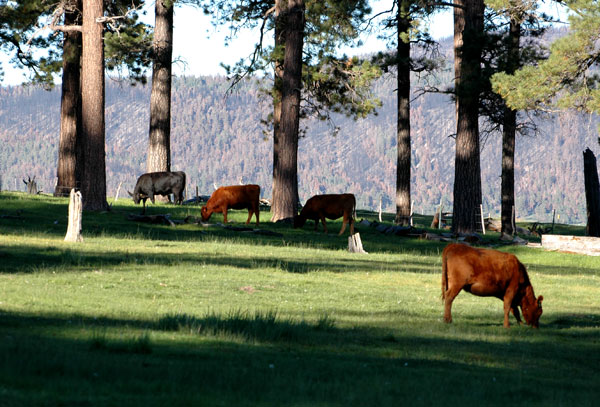You may be choosing a calving season based on weather, but breeding-season weather should be another consideration because, after all, favorable calving weather makes no difference to open cows.
June 29, 2017

By Justin Sexton
Summer means there will be some hot days. Timing and magnitude will vary, but sure as the sun comes up each morning, temperatures will rise and some cattle will experience heat stress. Regardless of the enterprise, from cow-calf to stockers or finishing cattle, summer heat will take a toll on productivity and ultimately beef quality.
Cow-calf producers have several ways to ease the impact, some more apparent than others. Well-shaded areas should be available to pastures in late June and early July; these first few weeks of summer traditionally fall squarely in the midst of the breeding season. The first heat-stress event can be the most challenging because cattle have not fully adapted to the seasonally higher temperatures.
And as important as caring for your cows, keeping bulls cool may be of even greater importance. Your investment in the next great sire to advance all herd goals will be in vain if heat stress renders him sterile. Spermatogenesis requires 60 days, so heat stress events can have lasting consequences on herd fertility through sub-fertile bulls.
With all that said, you may be choosing a calving season based on weather, but breeding-season weather should be another consideration. Favorable calving weather makes no difference to open cows.
Try to keep cows on vegetative forages during hot weather. Grazing mature, high-fiber forage causes greater metabolic heat from rumen digestion of cellulose. Fly control is a not-so-common strategy for heat stress mitigation, but consider this: cows bunch up to minimize fly exposure, resulting in decreased air cooling along with greater heat gain from herdmates and greater activity trying to avoid the flies.
We may not be sure if cows stand in ponds to keep cool, or free from flies or both, but they do it nonetheless. Make sure water access is plentiful and clean, because a problem with either will reduce water intake and reduce productivity independent of heat stress.
Dairy studies show cows respond to hot weather by either finding a way to cool off or increasing their heat load to the point of illness as productivity declines along the way. Conceiving the next generation is a lower priority than feeding the current calf, so cows use reproductive energy to cool themselves at the cost of pregnancy. If heat stress persists, milk production declines as more energy diverts to further cooling, at the risk of lower weaning weights for beef calves.
Nutrient priorities differ in stocker and feedlot cattle, but productivity will decline in a similar way. After seeking shade and increased water intake, growing cattle reduce feed intake to lower their metabolic heat. Feeding more of the ration or supplement in the evening and increasing nutrient density by adding fat can maintain growth and carcass quality as intake declines. Stocker operators can feed more supplement to reduce heat increment from forage digestion.
We don’t build our production systems around the extremes, or we’d be constantly under- or overstocked. Heat stress events seem extreme at the time but as with fires, floods and blizzards, the system operates on the average. You gain nothing by trying to select for environmentally adapted cattle through output reduction.
Current research suggests quite the contrary, as today’s genetic prediction tools such as expected progeny differences (EPDs) let you build a foundation of genetic potential upon which the ranch environment will act.
Sexton is director of supply development for Certified Angus Beef
You May Also Like



